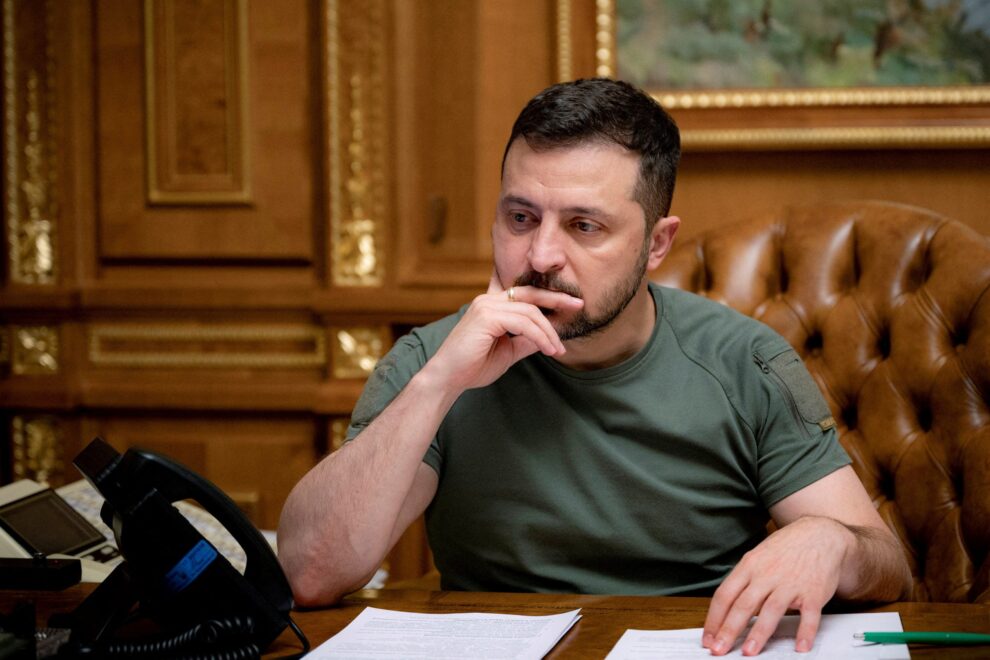The U.S. stamp of approval on transferring F-16s to Ukraine from the Netherlands and Denmark is offering optimism over getting the prized warplanes to the battlefield as soon as possible to give Kyiv a long-term boost in the largely stalemated war.
Secretary of State Antony Blinken this week gave the go-ahead for Danish and Dutch officials to deliver the aircraft, accelerating a path to transfer the planes to Ukraine after pilots complete a training program.
It’s still unclear how long it will take for the jets to arrive fully operational, but the training and transfer is expected to take a few months at a minimum — after Ukraine’s counteroffensive push likely culminates.
Even so, the approval marks a monumental step forward for Kyiv, and analysts say the aircraft will help Ukrainian troops in a grinding war of attrition against Russia no matter when they arrive over the skies.
Bradley Bowman, the senior director at the Center on Military and Political Power at the Foundation for Defense of Democracies, said “bringing new aircraft into an air force and sustaining them is more difficult than it sounds.”
“It’s difficult, time consuming, and resource intensive. That is true,” he said. “What is also true is that Ukraine has been incredibly impressive in learning quickly. There’s nothing like the largest land invasion in Europe since World War II to concentrate one’s mind and give one a sense of motivation as you’re defending your country, home, and family against an unprovoked invasion.”
The date of delivery is contingent on how fast Ukrainian pilots can learn to fly the aircraft after they start a training program this month hosted by 11 European allies. The coalition first announced the details of the flight training at a major NATO summit in July.
Ukraine is vastly outgunned against Russian aircraft, although neither side has achieved air superiority. Ukrainian pilots have been stuck using aging, Soviet-era fighter jets such as the MiG-29s.
That has been a huge problem in the ongoing counteroffensive in the southeastern Zaporizhizhia region, where Ukrainian troops face a number of obstacles, including Russian attack helicopters.
The news of F-16s headed to Ukraine sparked immediate excitement in the country. The Ukrainian Air Force posted on X, the platform formerly known as Twitter, simply: “Nice” alongside a photo of one of the planes, while other Ukrainian officials were sharing images of the F-16 across social media.
Ukrainian President Volodymyr Zelensky has asked for the F-16s since the beginning of the war but was rebuffed by Washington, which has argued the aircraft are not needed in the current phase of the war and the fighter jets are a long-term commitment.
President Biden has slowly warmed to the idea of sending over the advanced warplanes, announcing in May the U.S. would back the training program in Europe and commit to getting F-16s to Ukraine.
White House National Security Council advisor Jake Sullivan on Friday said the Dutch and Danish approval was an extension of the May agreement and had “formalized” the process to eventually approve third-party F-16 transfers.
“We underlined, underscored, and put an exclamation point on that this week,” Sullivan said, adding they were now working closely with European nations on the training program. “Our trainers are working with their trainers. So, there is a full integration of the effort at this point.”
That could open the door to more F-16 deliveries from other countries, which could further boost Ukraine’s chances on the battlefield. F-16s are among the most numerous and common western aircraft deployed in Europe.
Whether the fighter jets will change the dynamic of the war is a lingering question. If the warplanes arrive any time after the late fall, it will likely be too late to help with Ukraine’s counteroffensive.
Military analysts also question whether Kyiv can fully integrate the F-16s to synchronize with its entire air force to be effective, raising concerns as Ukrainian forces struggle to master combined arms maneuvers with armored vehicles and soldiers in the counteroffensive.
Joseph Shelzi, an analyst at global security consultancy firm the Soufan Group, said the F-16 deal is about “shoring up long-term security” for Ukraine, noting it will take months for Kyiv to integrate the aircraft fully into the armed forces.
Sheizi also said Russia will maintain a “qualitative and quantitative advantage of air power over Ukraine” for the foreseeable future.
“It can be difficult to place too much expectation on one shiny new piece of equipment,” Sheizi said. “The F-16 is a very sophisticated aircraft. It’s capable of a variety of different missions. But I don’t think it’s going to have an impact on the strategic outcome of the war. I don’t think it’s a game changer in itself.”
Russia is strained in the war, however, and providing Kyiv with more and more advanced weapons could alter the outcomes on the battlefield over time.
Michael Bohnert, a licensed engineer at the Rand Corporation, said Moscow is overusing its fleet of warplanes, suffering heavy losses and likely to degrade its air superiority over time.
“This happens even if F-16s fail to score a single air-to-air kill, and an upgraded Ukrainian fighter and air defense threat will score many,” Bohnert wrote in an opinion piece this week in Defense News.
Bowman, from the Foundation for Defense of Democracies, said the F-16s would, in theory, help with three things: deep strikes into Russia-occupied territory, close air support and air defense.
Ukraine is already proving capable of striking deep into Russian territory with the long-range artillery weapons it acquired from the U.K., while air defense systems are effectively covering the skies, Bowman said.
That leaves close air support, involving aircraft to successfully cover each other in combat, something that can prove hard to do. Bowman agrees that F-16s will have a positive impact on the battlefield for Ukraine but cautioned supporters to moderate expectations.
“Bringing a new aircraft into a fleet is more difficult than it sounds to people,” he said. “It’s very difficult. It’s very time consuming. That is true. What is also true is that Ukraine has been incredibly impressive in learning quickly and integrating quickly. There’s nothing like the largest land invasion since World War II to concentrate one’s mind and get one a sense of motivation as you’re defending your home and your family and children against unprovoked invasion.”
Source : The Hill












Add Comment